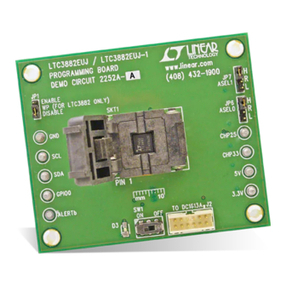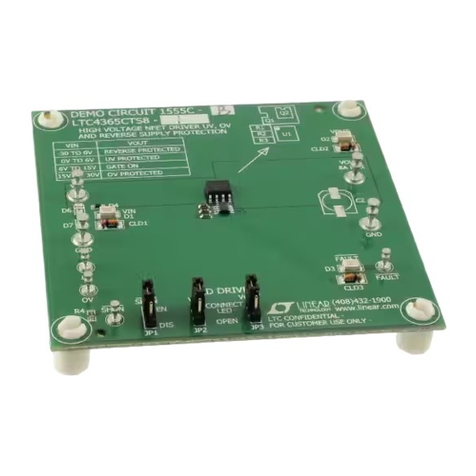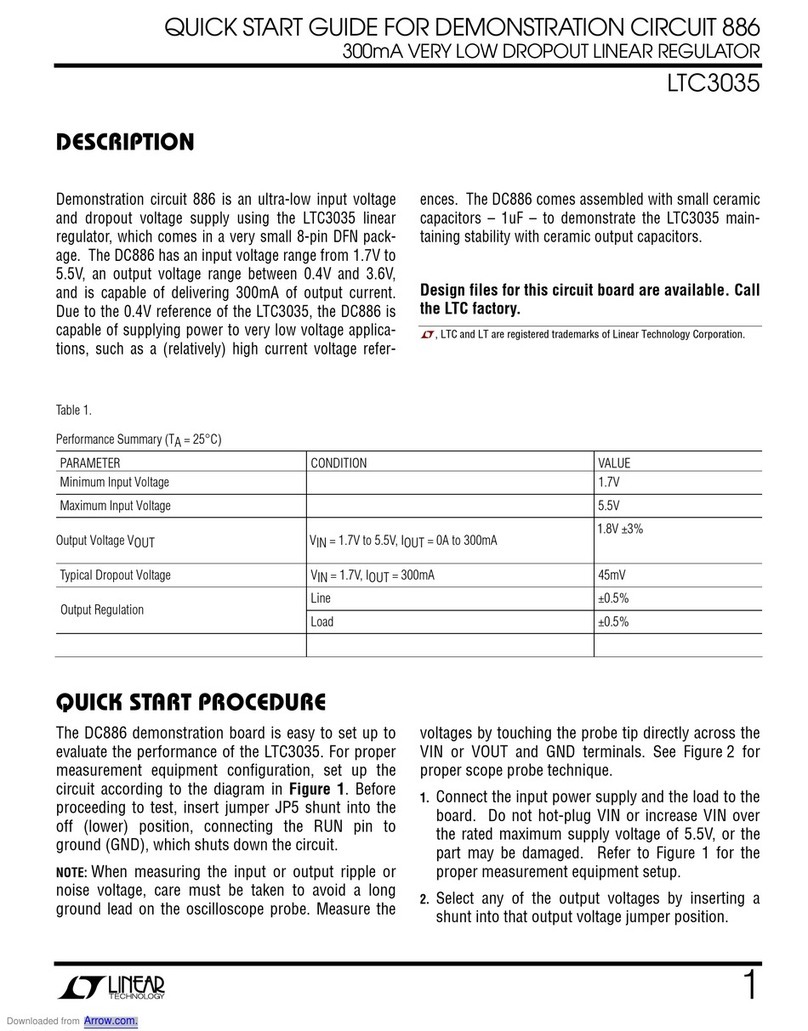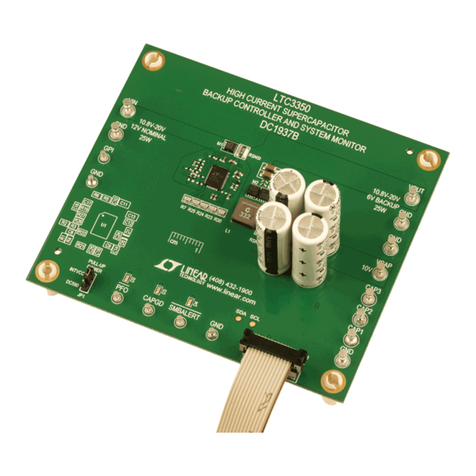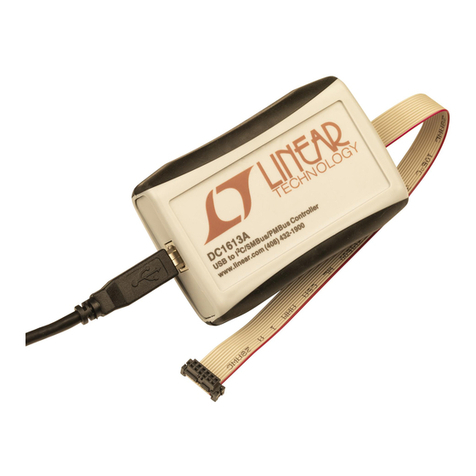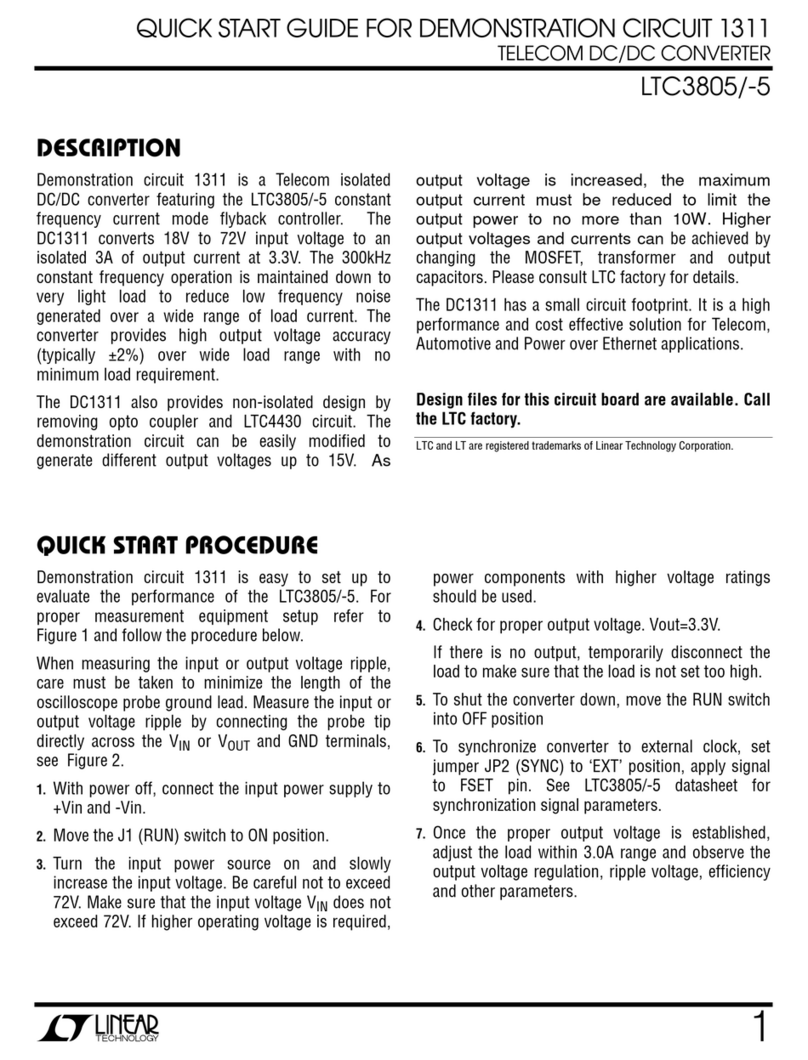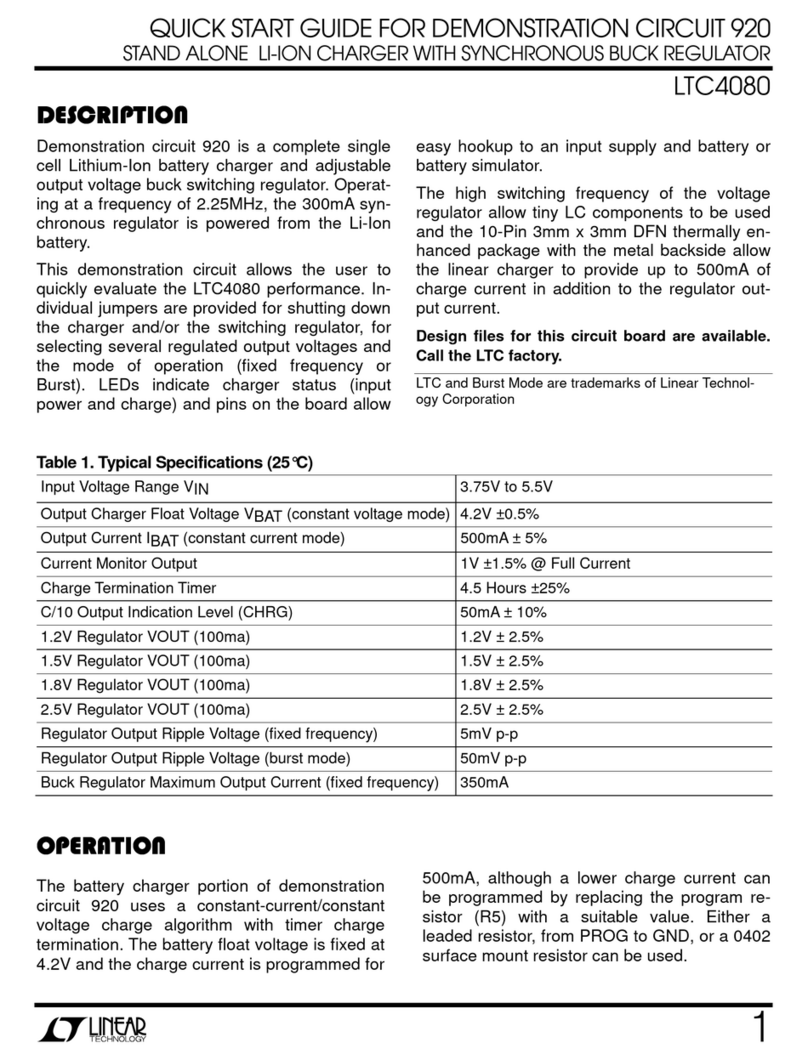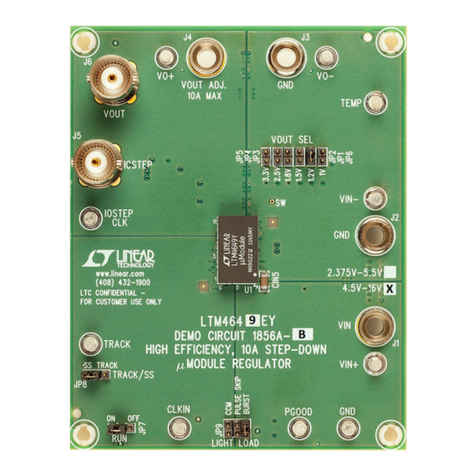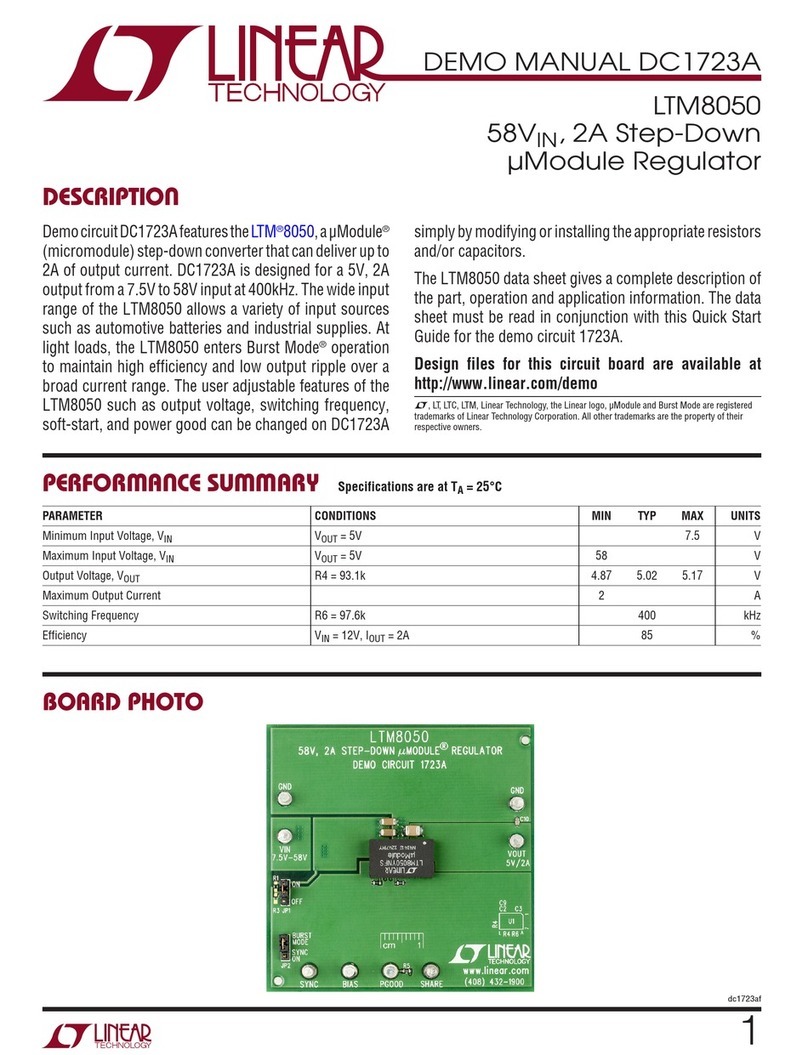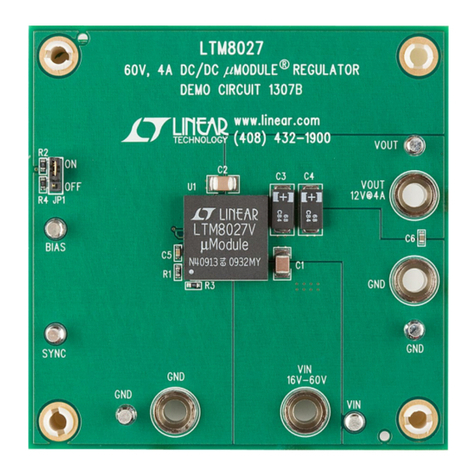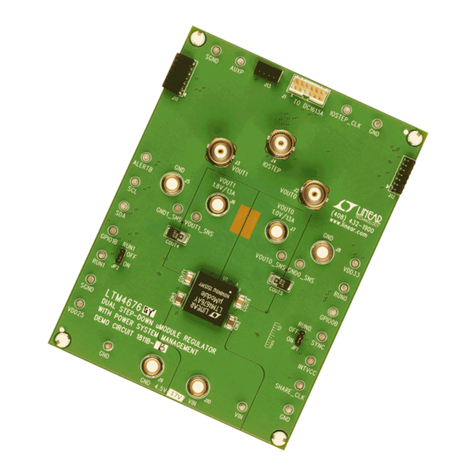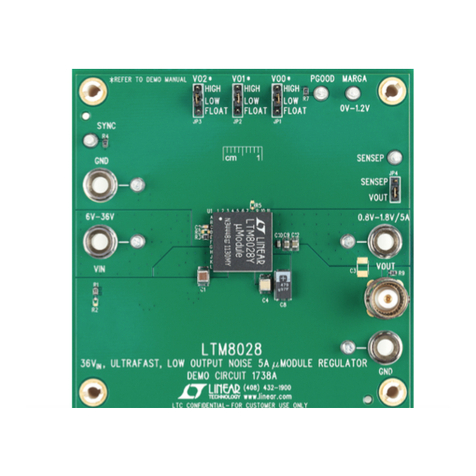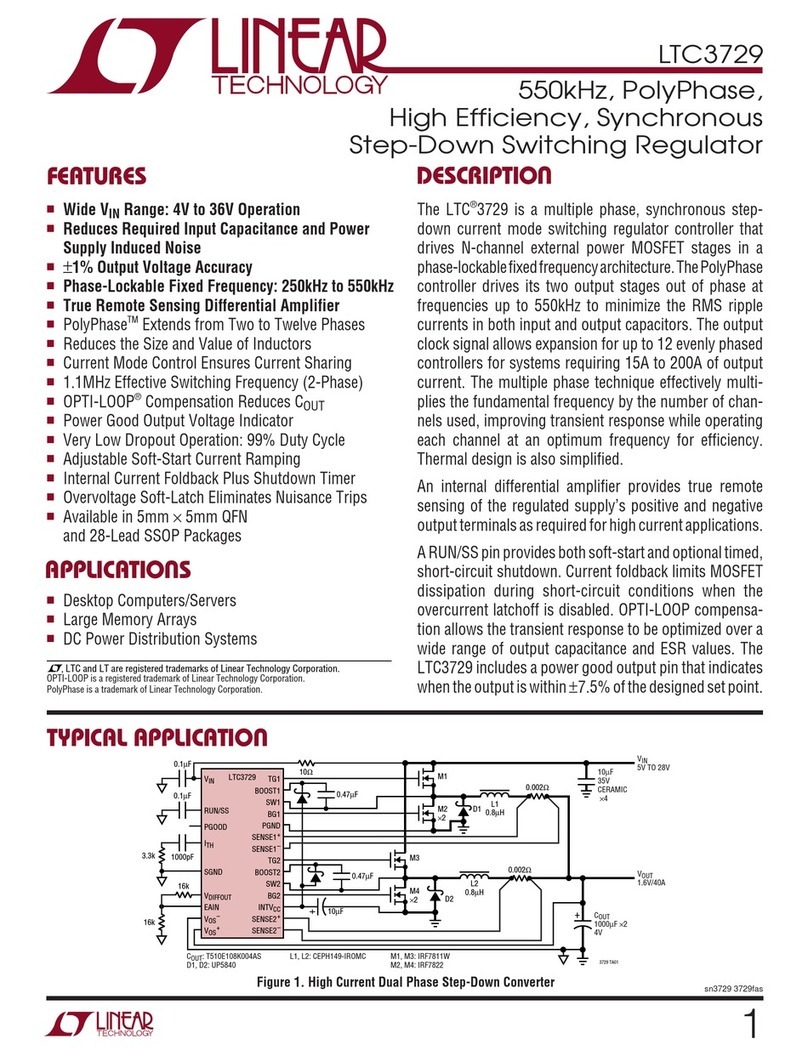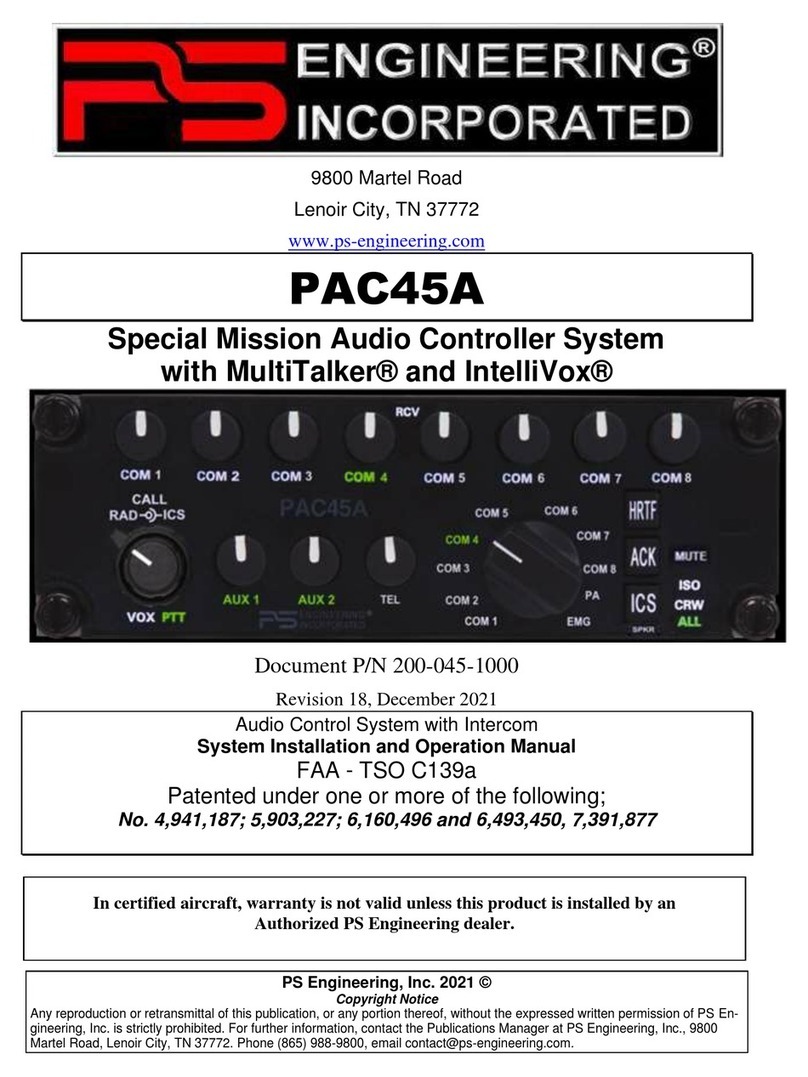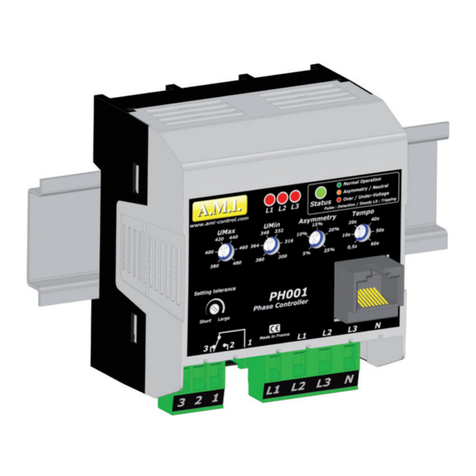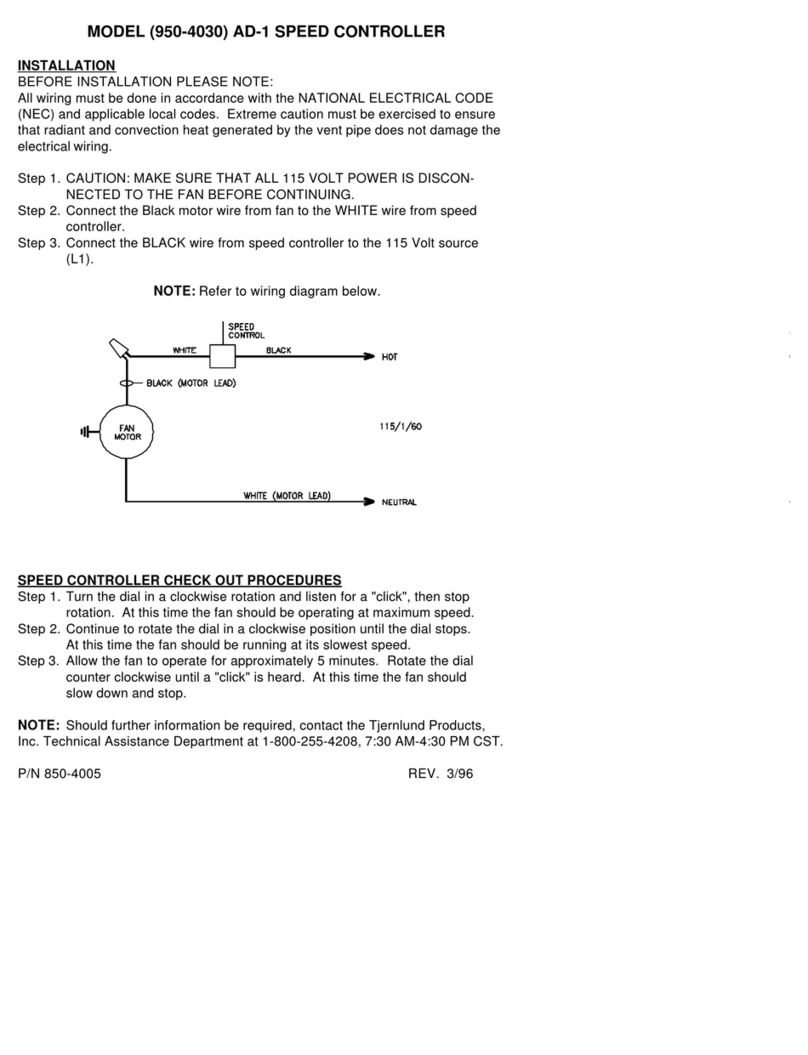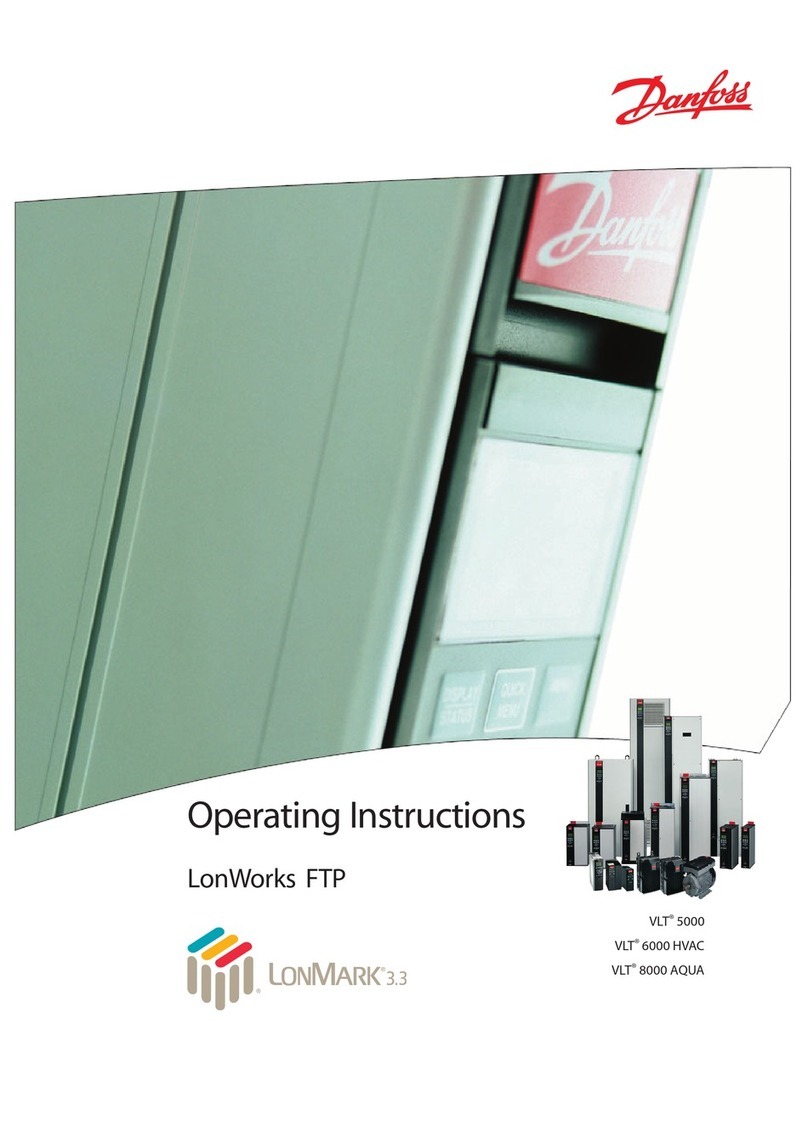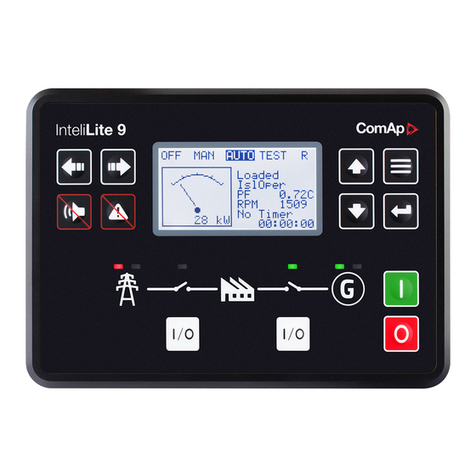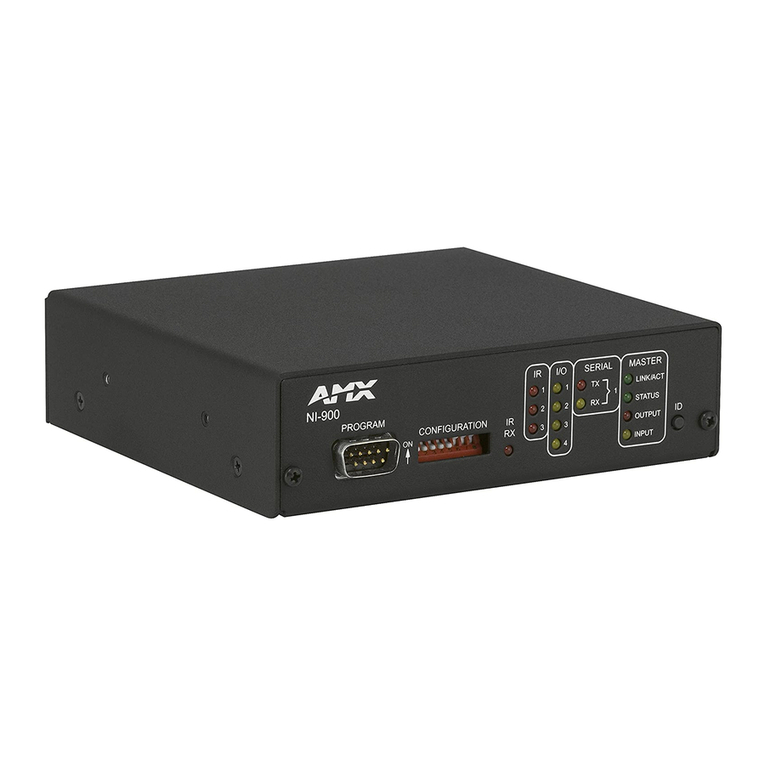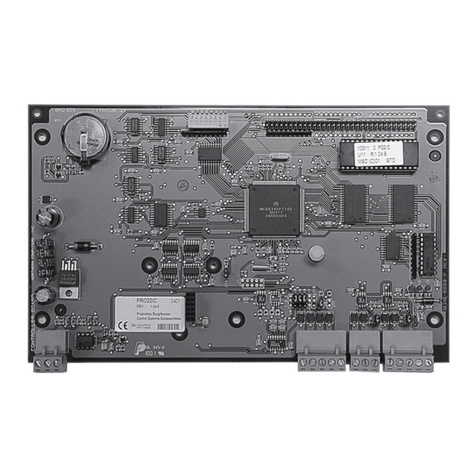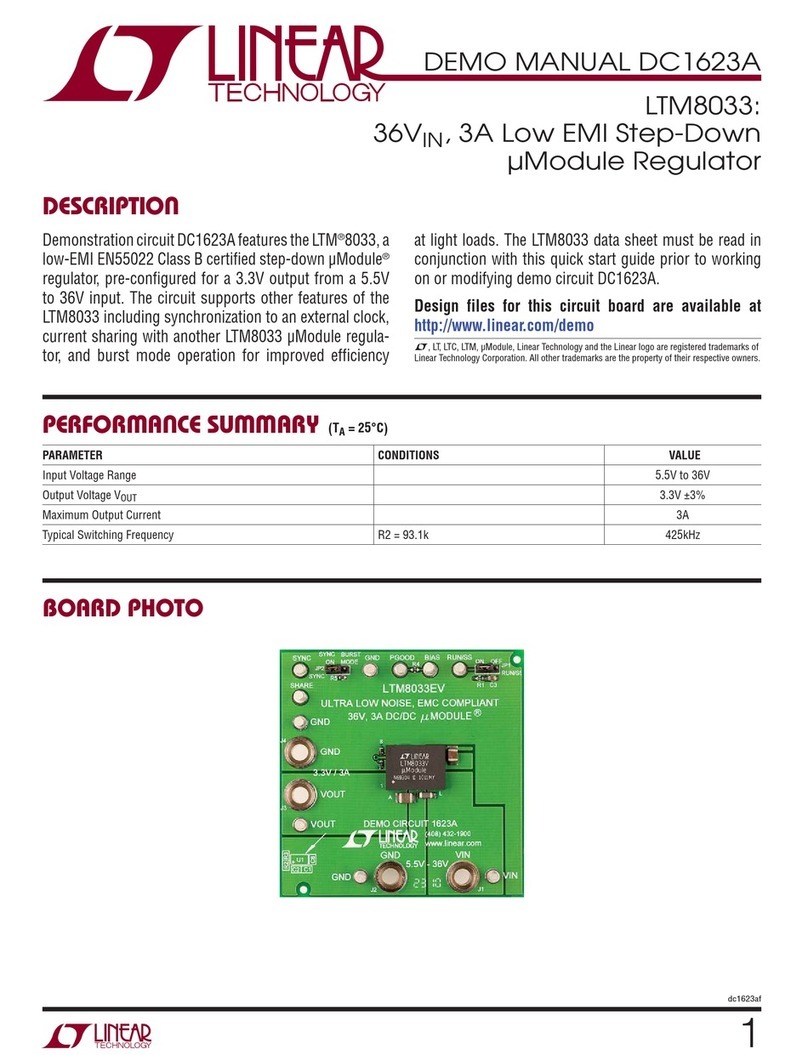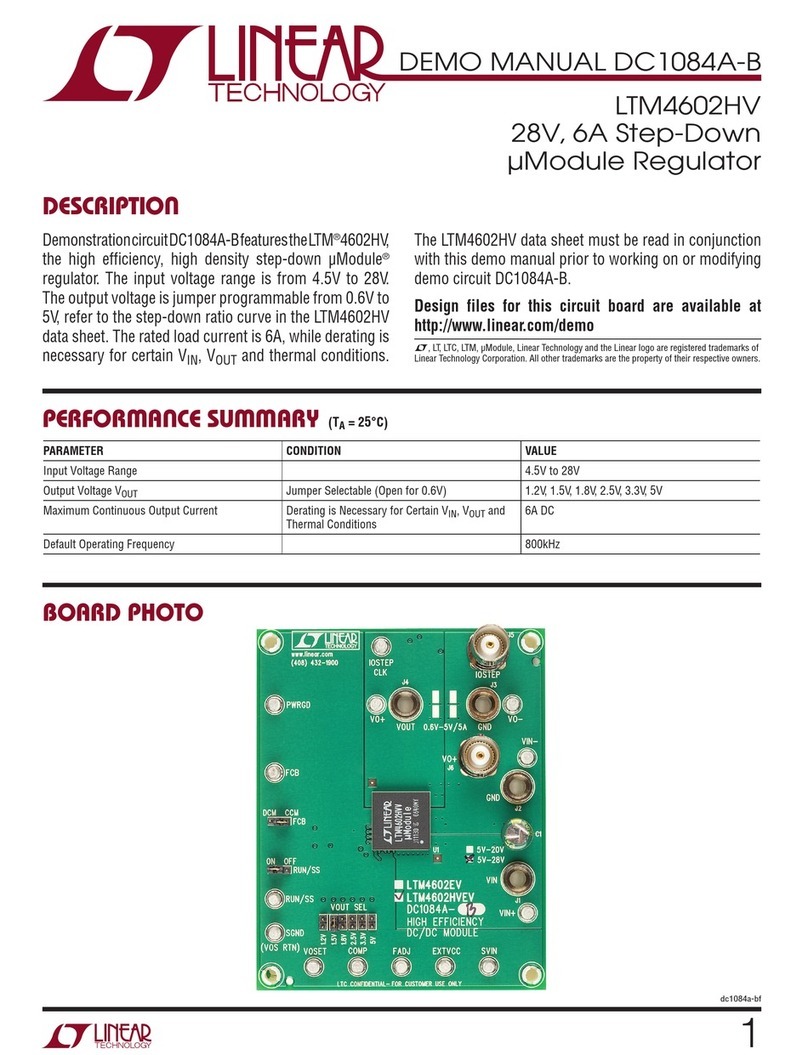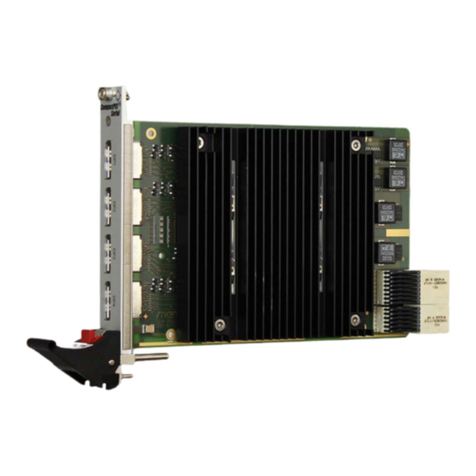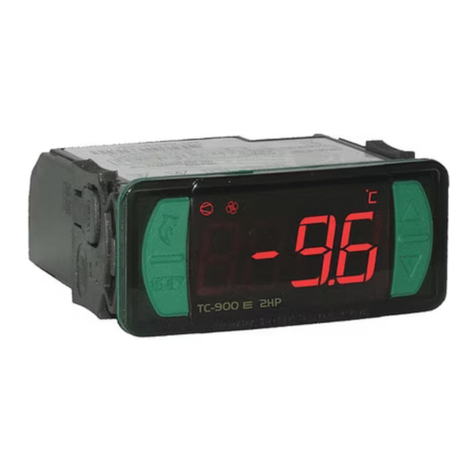
10
LTC3736
3736fa
Main Control Loop
The LTC3736 uses a constant frequency, current mode
architecture with the two controllers operating 180 de-
grees out of phase. During normal operation, the top
external P-channel power MOSFET is turned on when the
clock for that channel sets the RS latch, and turned off
when the current comparator (I
CMP
) resets the latch. The
peak inductor current at which I
CMP
resets the RS latch is
determined by the voltage on the I
TH
pin, which is driven
by the output of the error amplifier (EAMP). The V
FB
pin
receives the output voltage feedback signal from an exter-
nal resistor divider. This feedback signal is compared to
the internal 0.6V reference voltage by the EAMP. When the
load current increases, it causes a slight decrease in V
FB
relative to the 0.6V reference, which in turn causes the I
TH
voltage to increase until the average inductor current
matches the new load current. While the top P-channel
MOSFET is off, the bottom N-channel MOSFET is turned
on until either the inductor current starts to reverse, as
indicated by the current reversal comparator, I
RCMP
, or the
beginning of the next cycle.
Shutdown, Soft-Start and Tracking Start-Up
(RUN/SS and TRACK Pins)
The LTC3736 is shut down by pulling the RUN/SS pin low.
In shutdown, all controller functions are disabled and the
chip draws only 9µA. The TG outputs are held high (off)
and the BG outputs low (off) in shutdown. Releasing
RUN/SS allows an internal 0.7µA current source to charge
up the RUN/SS pin. When the RUN/SS pin reaches 0.65V,
the LTC3736’s two controllers are enabled.
The start-up of V
OUT1
is controlled by the LTC3736’s
internal soft-start. During soft-start, the error amplifier
EAMP compares the feedback signal V
FB1
to the internal
soft-start ramp (instead of the 0.6V reference), which rises
linearly from 0V to 0.6V in about 1ms. This allows the
output voltage to rise smoothly from 0V to its final value,
while maintaining control of the inductor current.
The 1ms soft-start time can be increased by connecting
the optional external soft-start capacitor C
SS
between the
RUN/SS and SGND pins. As the RUN/SS pin continues to
OPERATIO
U
rise linearly from approximately 0.65V to 1.3V (being
charged by the internal 0.7µA current source), the EAMP
regulates the V
FB1
proportionally linearly from 0V to 0.6V.
The start-up of V
OUT2
is controlled by the voltage on the
TRACK pin. When the voltage on the TRACK pin is less
than the 0.6V internal reference, the LTC3736 regulates
the V
FB2
voltage to the TRACK pin instead of the 0.6V
reference. Typically, a resistor divider on V
OUT1
is con-
nected to the TRACK pin to allow the start-up of V
OUT2
to
“track” that of V
OUT1
. For one-to-one tracking during start-
up, the resistor divider would have the same values as the
divider on V
OUT2
that is connected to V
FB2
.
Light Load Operation (Burst Mode or Continuous
Conduction) (SYNC/FCB Pin)
The LTC3736 can be enabled to enter high efficiency Burst
Mode operation or forced continuous conduction mode at
low load currents. To select Burst Mode operation, tie the
SYNC/FCB pin to a DC voltage above 0.6V (e.g., V
IN
). To
select forced continuous operation, tie the SYNC/FCB to a
DC voltage below 0.6V (e.g., SGND). This 0.6V threshold
betweenBurst Modeoperation andforcedcontinuous mode
can be used in secondary winding regulation as described
in the Auxiliary Winding Control Using SYNC/FCB Pin dis-
cussion in the Applications Information section.
When a controller is in Burst Mode operation, the peak
current in the inductor is set to approximate one-fourth of
the maximum sense voltage even though the voltage on
the I
TH
pin indicates a lower value. If the average inductor
current is lower than the load current, the EAMP will
decrease the voltage on the I
TH
pin. When the I
TH
voltage
drops below 0.85V, the internal SLEEP signal goes high
and both external MOSFETs are turned off.
In sleep mode, much of the internal circuitry is turned off,
reducing the quiescent current that the LTC3736 draws.
The load current is supplied by the output capacitor. As
the output voltage decreases, the EAMP increases the I
TH
voltage. When the I
TH
voltage reaches 0.925V, the SLEEP
signal goes low and the controller resumes normal
operation by turning on the external P-channel MOSFET
on the next cycle of the internal oscillator.
(Refer to Functional Diagram)























